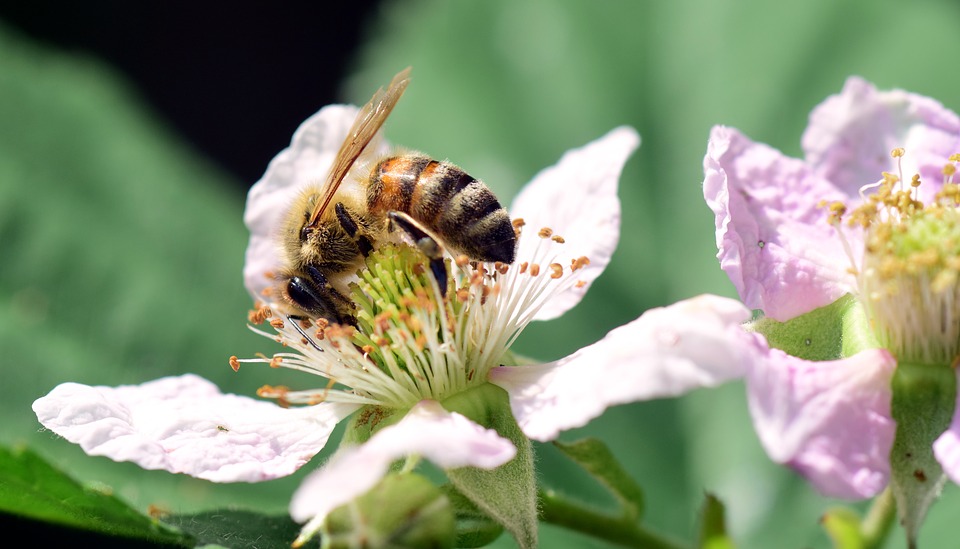Guest Post! Creating A Garden To Save The Bees: How To Get Started

By Christy Erickson of Savingourbees.org
Photo via Pixabay by Ulleo
(My personal note – I had some questions, which Christy was kind enough to answer – these will be included at the end of her post. If you have further beekeeping questions, contact her through her website above!)
While bees are viewed as pests by many people, there’s actually quite a lot to like about these small creatures; for one thing, they play a huge role in much of the food we eat, from pollinating fruits and veggies like broccoli, apples, and peaches to ensuring that the animals we consume have enough to eat. Now that they’re facing dangers such as pesticides, habitat loss, and disease, the bee population has steadily dwindled in recent years, to an alarming degree. But what can we do to help?
One of the best ways to make sure the bees in your community continue to thrive is to give them a safe place to feed and rest, which means having a garden of some kind. While it doesn’t need to be big, it does need to have a few essentials that will help the bees meet their daily needs, such as finding enough food and water and a safe place to build a nest.
Read on for tips on how to help the bees in your community.
Do your homework
Helping the bees in your area stay healthy takes a bit of research; you’ll need to look up the right flowers to plant for your climate and think about where to put your garden space. For instance, if your lawn gets a lot of shade, you might look for a spot that gets strong afternoon sun. If your lawn has a large slope, you’ll want to stay away from planting anything at the bottom as it will get too much water each time it rains. Because bees need to find food most of the year, it’s important to remember to plant seeds that will be in bloom during the fall, and not just in the spring and summer. Look at perennials, that return year after year, such as tulips, hollyhock, and daffodils.
Never use pesticides on your plants; if you have a bug issue, consider using natural remedies to get them under control. Pesticides interfere with pollen and the bees’ ability to use it.
Think of their needs
Some bees build nests underground or have little safe places in shrubs and trees that stay full year round, such as evergreens. Too much open green space–with few flowers and nowhere to take cover–isn’t good for bees, so if your neighborhood is lacking in these areas, consider planting more than just flowers. Give them a safe place to get away from the outside world.
It’s also a good idea to set out a small bowl of water–or a birdbath–that has stones protruding from it so that the bees can stop and get a drink without falling in and drowning.
Wait on mowing
It might be tricky to let your grass get a bit shaggy, especially if you have an HOA with a list of rules about how to keep the front of your home looking nice. But if it’s possible, skip a week of mowing and let the grass grow a bit. This will allow clover and dandelions to sprout, which give the bees ample food in places where it’s otherwise scarce.
Support local farmers
It’s imperative to support your local farmers and beekeepers, as they’re the people responsible for making sure the bee population continues to thrive in your area. Show them your support by attending the farmer’s market in your town and buying their produce and honey. You can also ask if they have a sponsorship program that will allow you to donate a certain amount of money each month or year to help support their efforts in exchange for honey and other goodies.
Remember that bees aren’t out to get you. Many people have a fear of them, especially kids, so teach your children that the bees do more good than harm and that they are much more interested in the flowers than they are in stinging. This will help change the way we view these highly important creatures.
A Quick Q&A with Christy
